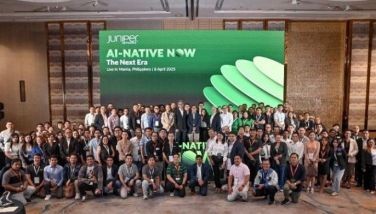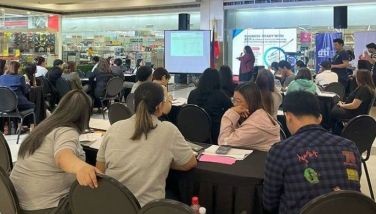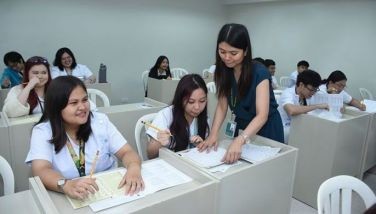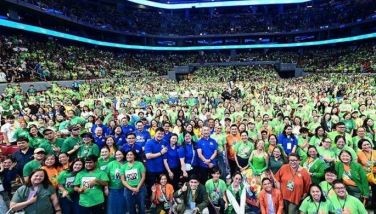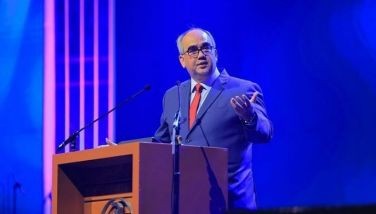Fight pollution by adopting old trees - ROSES AND THORNS By Alejandro R. Roces
March 1, 2001 | 12:00am
Henry Abbey saw trees as the source of material that provided man with the vessels that crossed oceans, the flagpoles of respective countries, the shade from the hot sun and, if we may add, the lumber for our homes. Today, they are also the lungs of modern cities, providing the natural cleansing system for the incredible pollution we face daily. It is no exaggeration to say that without trees, a metropolis like Metro Manila would not be fit for human habitation.
A tree can provide the oxygen requirements of 10 air conditioning units. But it takes no less than a hundred years to purify the pollution produced by a single truck. Our problem is really to plant more trees. But sometimes, we get into a predicament where we have no choice but to cut old trees. That is the situation that the Department of Public Works and Highways (DPWH) and the Department of Environment and Natural Resources (DENR) now have to face.
In the planned construction of the EDSA-Quezon Avenue Interchange in Quezon City, 423 trees will be affected. One hundred eighty-six trees will have to be cut down. Fortunately, 237 will be balled and transplanted to the DENR nursery. When the EDSA-Quezon Avenue Interchange is completed, some of them will be replanted in the old site. To save old trees, the DPWH will modify the project’s lane width by constructing a large island where trees that are so old and big that they can no longer be transplanted will be preserved. They also donated 100 seedlings to the DENR for every tree that they have to cut.
Seventy of the 237 trees that will be balled are 50- to 90- year old mahogany trees. The rest are talisay, gemelina, kapok, mango, sampaloc, coconut, duhat, madre de cacao and kalachuchi. As we said earlier, they will temporarily be placed and cared for in the DENR nursery. The next problem is: where will they be transferred? That is where the DENR will need the people’s cooperation. They will need public or private institutions, or individual persons who can adopt these trees merely by finding appropriate places for them to be transferred. Many plush villages have parks. Surely, these old trees will be an asset to any park that has a place for them. New subdivisions can also use some of the trees. We hope that our civic organizations such as the Rotary Club, the Jaycees and the Lions take an interest in finding a new site for these ancestral trees.
The "Adopt-A-Tree" Program is the brainchild of Isabela Rep. Heherson Alvarez, who is the founding chairman of the Earthsavers’ Movement in cooperation with the officials of the DPWH and DENR.
We believe that Metro Manila should have an organized tree-planting project. When we say organized, we mean that each and every barangay should be part of the program. There should be a fixed program and goal for every community and there should be regular reports to appraise the public of the progress of the project. With little effort, Metro Manila could be one of the greenest cities in the world.
A tree can provide the oxygen requirements of 10 air conditioning units. But it takes no less than a hundred years to purify the pollution produced by a single truck. Our problem is really to plant more trees. But sometimes, we get into a predicament where we have no choice but to cut old trees. That is the situation that the Department of Public Works and Highways (DPWH) and the Department of Environment and Natural Resources (DENR) now have to face.
In the planned construction of the EDSA-Quezon Avenue Interchange in Quezon City, 423 trees will be affected. One hundred eighty-six trees will have to be cut down. Fortunately, 237 will be balled and transplanted to the DENR nursery. When the EDSA-Quezon Avenue Interchange is completed, some of them will be replanted in the old site. To save old trees, the DPWH will modify the project’s lane width by constructing a large island where trees that are so old and big that they can no longer be transplanted will be preserved. They also donated 100 seedlings to the DENR for every tree that they have to cut.
Seventy of the 237 trees that will be balled are 50- to 90- year old mahogany trees. The rest are talisay, gemelina, kapok, mango, sampaloc, coconut, duhat, madre de cacao and kalachuchi. As we said earlier, they will temporarily be placed and cared for in the DENR nursery. The next problem is: where will they be transferred? That is where the DENR will need the people’s cooperation. They will need public or private institutions, or individual persons who can adopt these trees merely by finding appropriate places for them to be transferred. Many plush villages have parks. Surely, these old trees will be an asset to any park that has a place for them. New subdivisions can also use some of the trees. We hope that our civic organizations such as the Rotary Club, the Jaycees and the Lions take an interest in finding a new site for these ancestral trees.
The "Adopt-A-Tree" Program is the brainchild of Isabela Rep. Heherson Alvarez, who is the founding chairman of the Earthsavers’ Movement in cooperation with the officials of the DPWH and DENR.
We believe that Metro Manila should have an organized tree-planting project. When we say organized, we mean that each and every barangay should be part of the program. There should be a fixed program and goal for every community and there should be regular reports to appraise the public of the progress of the project. With little effort, Metro Manila could be one of the greenest cities in the world.
BrandSpace Articles
<
>
- Latest
- Trending
Trending
Latest









